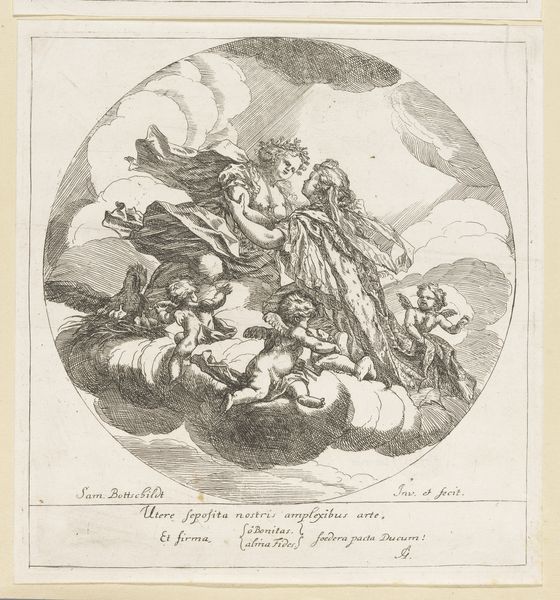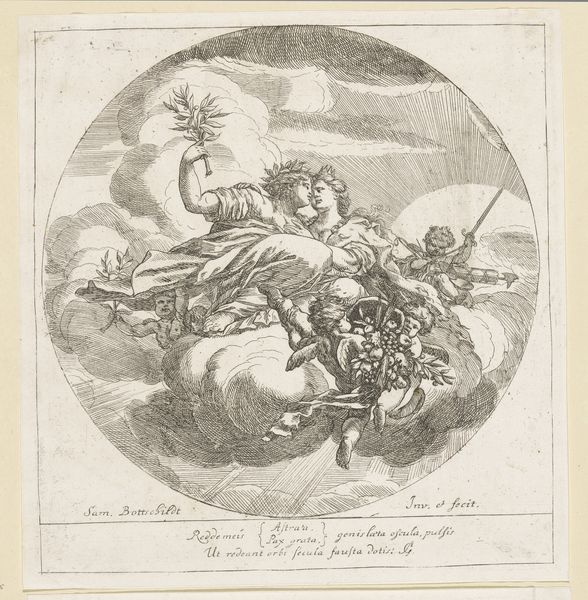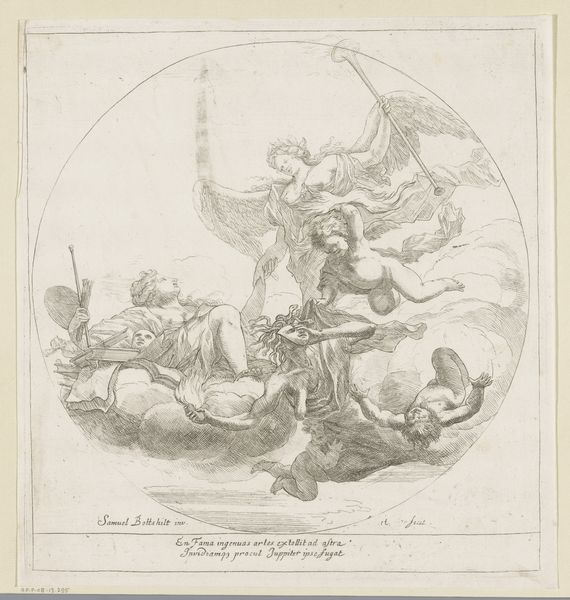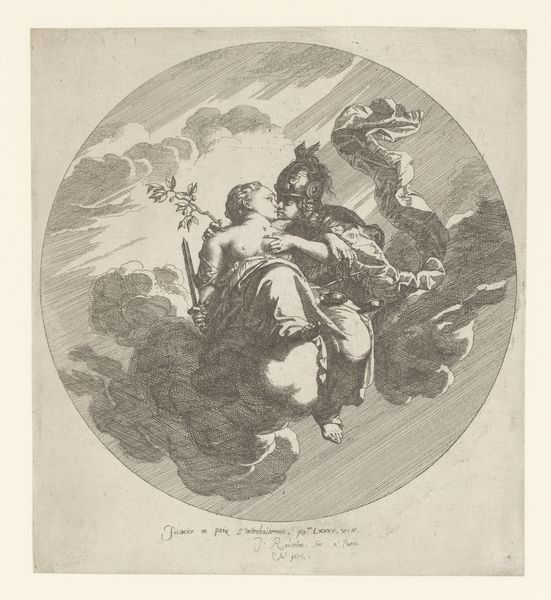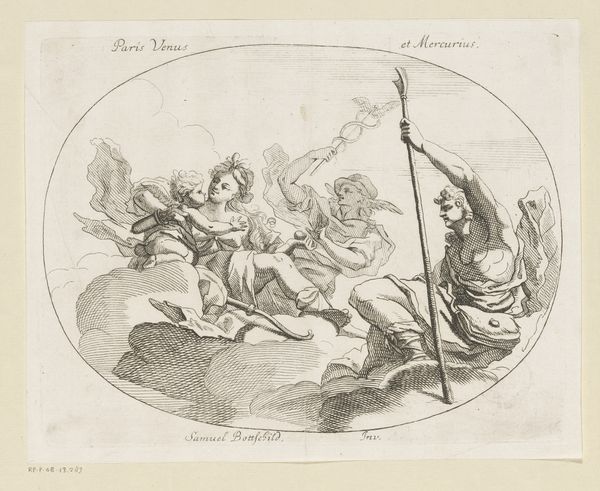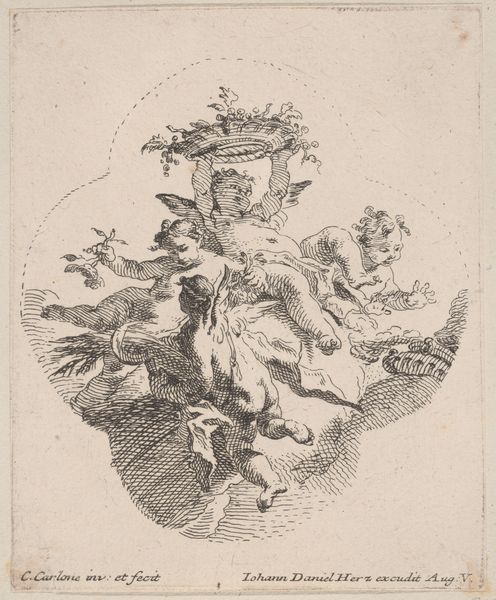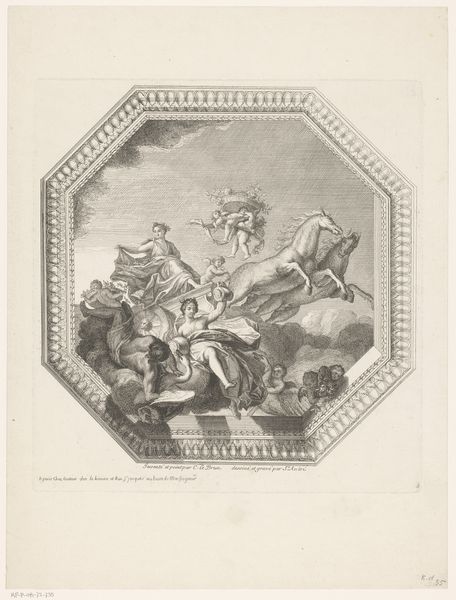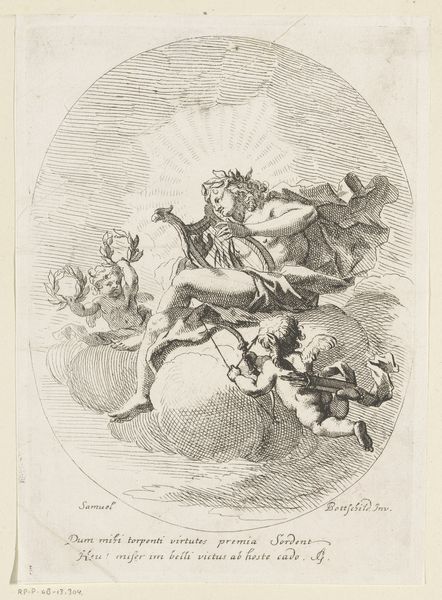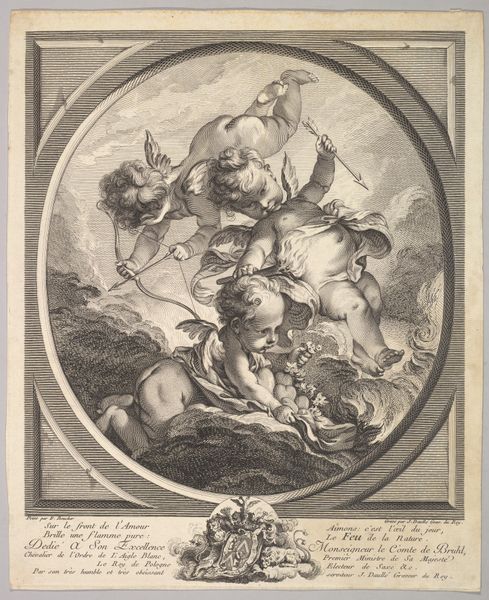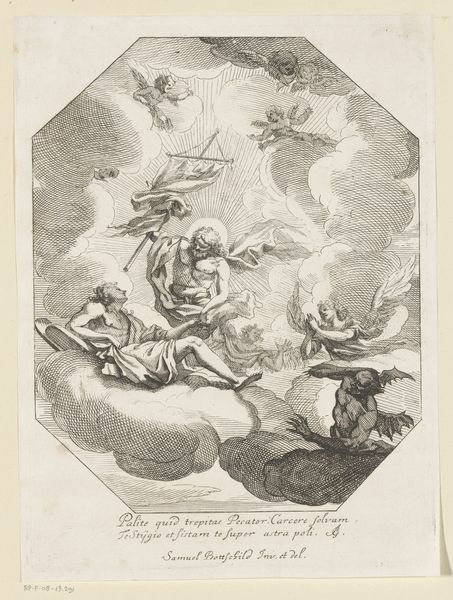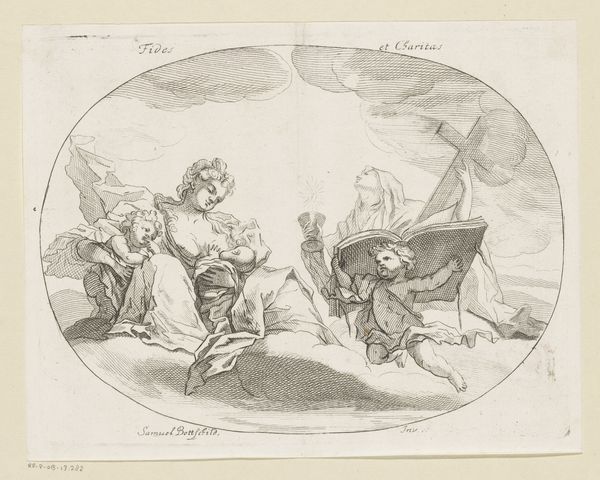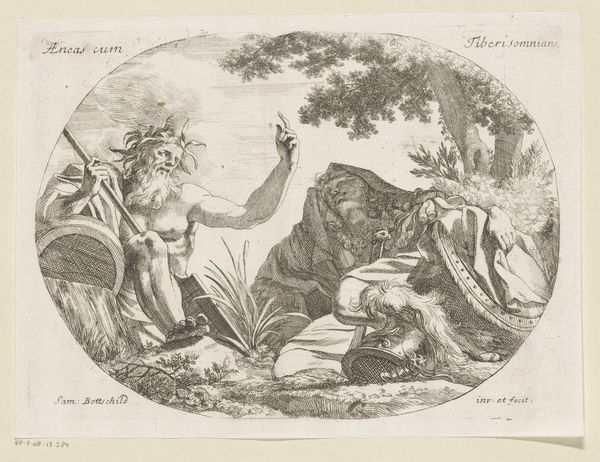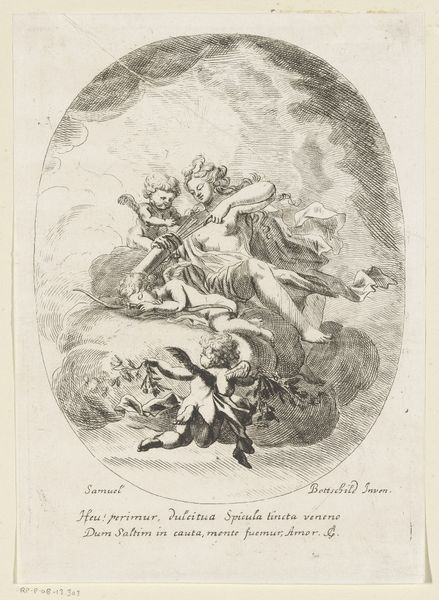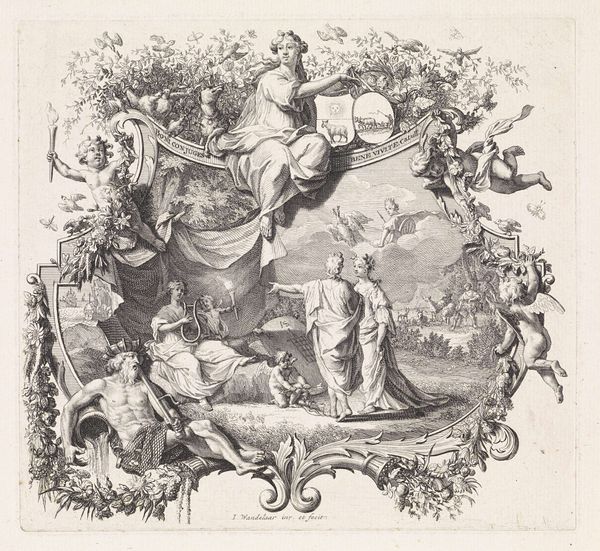
engraving
#
allegory
#
baroque
#
figuration
#
line
#
history-painting
#
engraving
Dimensions: height 280 mm, width 260 mm
Copyright: Rijks Museum: Open Domain
Curator: Let’s look at this engraving, “Venus schenkt Aeneas wapens” from 1693 by Samuel Bottschild. It’s housed in the Rijksmuseum. Editor: Yes, the Rijksmuseum tells us that's "Venus giving Aeneas weapons." My first impression is how dramatic it is. There’s so much movement conveyed just through lines, particularly in the figures amidst the clouds. What's your take on this piece? Curator: Considering it was made in 1693, it definitely aligns with the Baroque emphasis on drama, but also the prevailing social structures that shaped these narratives. Let's think about why Bottschild chose this scene from Virgil's Aeneid. What does it tell us about the concerns of the patrons or audience viewing it at that time? Editor: Well, I guess it has something to do with power, divine intervention…a hero’s journey maybe? Curator: Exactly. The story is about destiny, lineage, and the establishment of power – themes heavily employed to legitimize contemporary rulers and aristocracy. Venus bestowing arms, forged by Cyclopes no less, reinforces Aeneas' divinely ordained right to conquer and found Rome. Editor: So, it’s propaganda almost? Curator: Not overtly, but absolutely serving a purpose in bolstering specific ideologies around leadership. The emphasis on classical stories provided an acceptable narrative to express this belief in the established power system. How do you see the circular composition playing into this? Editor: Hmm, the circle…maybe it suggests cycles of power? Like, the Roman Empire is reborn again and again in different forms? Curator: That’s insightful! Circular forms often symbolize eternity or continuation. Now, think about Venus, the goddess of love, being the one to gift these weapons. How might a feminist perspective interpret this? Editor: Well, on the one hand, she's the driving force behind Aeneas's power, but she is depicted kind of passively, as part of Aeneas's narrative, and not one of her own. Curator: Precisely! It presents an interesting conflict: she’s powerful, yet her power is being used to support a patriarchal system, a pretty astute reflection on how power often operates within oppressive structures. Editor: Wow, I never considered all those angles. It makes me realize just how much more there is to art than what meets the eye. Curator: And hopefully encourages questioning how these classical narratives are resurrected and adapted to suit different social and political landscapes.
Comments
No comments
Be the first to comment and join the conversation on the ultimate creative platform.
